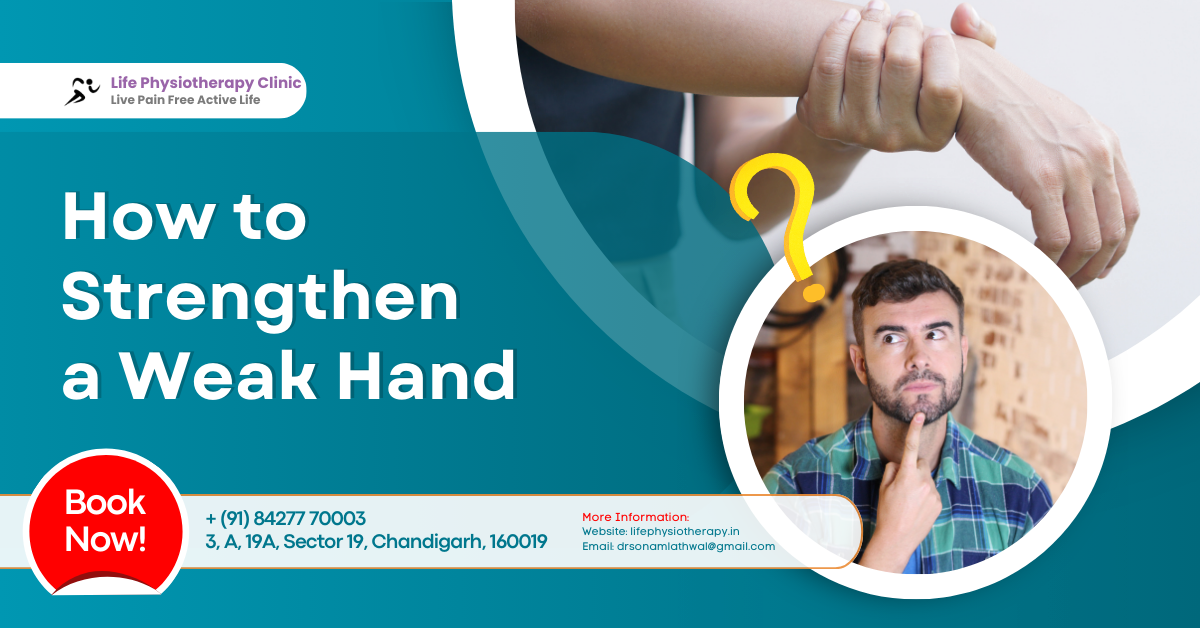How to Strengthen a Weak Hand: Comprehensive Guide
Strengthening a weak hand involves a multifaceted approach of exercises, daily activities, and consistent practice.Hand strength is crucial for everyday activities—from gripping objects and typing on keyboards to carrying groceries and writing. When your hand is weak, these simple tasks can become challenging, greatly affecting your quality of life. In this guide, we’ll explore effective ways to strengthen a weak hand. We’ll discuss the causes of hand weakness, present effective exercises, and suggest lifestyle modifications to aid in both recovery and maintenance. Whether your goal is to regain strength or enhance performance, this guide will provide you with practical steps to improve your hand functionality.
Understanding Hand Weakness
In our daily lives, the strength of our hands plays a vital role in performing both simple and complex tasks. When weakness occurs, it can hinder our ability to function efficiently. Before exploring the ways to strengthen a weak hand, it’s essential to understand the underlying causes and symptoms of hand weakness.
A. Common Causes of Hand Weakness
1. Injury or Trauma
Description
Hand injuries, such as fractures, dislocations, and ligament tears, can lead to weakness. Trauma from accidents or sports-related injuries can damage bones, muscles, and tendons in the hand.
Treatment Options
- Physical Therapy: Tailored exercises to gradually restore hand strength and mobility.
- Splinting: Using a splint to immobilize and protect injured areas during the healing process.
- Surgery: In severe cases, surgical intervention may be necessary to repair damaged structures.
2. Neurological Conditions
Explanation
Neurological conditions like stroke, carpal tunnel syndrome, and nerve damage can result in hand weakness. These conditions affect the nervous system, leading to decreased muscle control and strength.
Treatments
- Rehabilitation: Focused therapy to regain motor skills and strength.
- Medication: Medicines to manage symptoms and improve nerve function.
- Therapeutic Interventions: Techniques like electrical stimulation and acupuncture may aid in recovery.
3. Muscle Atrophy or Weakness
Discussion
Muscle atrophy occurs when muscles waste away due to inactivity, aging, or certain medical conditions. Lack of use can cause muscle weakness over time.
Strategies
- Exercise: Regular hand and wrist exercises to build muscle mass and strength.
- Nutrition: Adequate protein intake to support muscle growth and repair.
- Rehabilitation: Working with a therapist to develop a personalized exercise plan.
B. Symptoms and Indicators
- Difficulty Gripping Objects:
A common sign of hand weakness is the inability to maintain a firm grip on objects.
- Pain or Discomfort:
Experiencing pain while moving the hand can be indicative of underlying weakness issues.
- Reduced Dexterity:
A noticeable decrease in hand mobility or dexterity is often a symptom of weakness.
Warm-Up Exercises
Engaging in warm-up exercises is crucial as it prepares the muscles and joints for more intensive activity, reducing the risk of injury.
A. Importance of Warming Up
- Prepares Muscles:
Warm-up exercises increase blood flow, making muscles more pliable and ready for exercise.
- Reduces Injury Risk:
Proper warm-ups help prevent strains and sprains during workouts.
B. Wrist Rotations
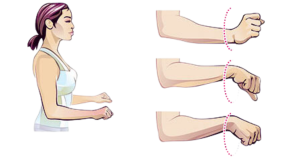
Step-by-Step Instructions:
Extend your arm in front of you.
Slowly rotate your wrist clockwise for 10 rotations.
Repeat the same movement counterclockwise.
C. Finger Flexes and Extensions
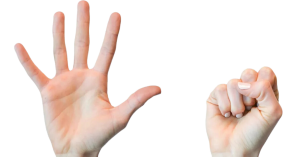
Instructions:
Spread your fingers wide.
Slowly contract your fingers into a fist, then extend them out again.
Benefits:
Improves flexibility and preps the fingers for more strenuous exercises.
Hand and Finger Strengthening Exercises
After warming up, you can perform various exercises designed to enhance hand and finger strength.
A. Stretching Exercises
- Finger Stretches:

Instructions:
Extend your fingers as wide as possible.
Hold for 5 seconds, then relax.
Benefits:
Helps increase finger flexibility and maintain joint mobility.
- Thumb Stretches:
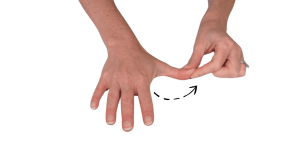
Instructions:
Stretch your thumb away from your fingers.
Hold for 5 seconds.
Benefits:
Essential for maintaining and enhancing thumb flexibility.
B. Grip Strengthening Exercises
- Using a Stress Ball:
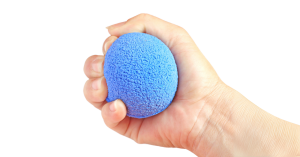
How-to:
Hold a stress ball in your palm.
Squeeze firmly and hold for 5 seconds.
Release and repeat for 10 repetitions.
Frequency:
Perform daily to improve grip strength over time.
Hand Grip Strengtheners:
Types and Benefits:
Spring-loaded grips or flexible rubber grips can enhance overall hand strength and endurance.
C. Finger Lifts
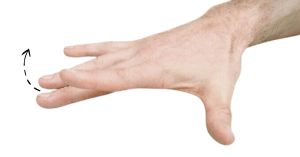
- Instructions:
Place your hand palm-down on a flat surface.
Lift each finger individually while keeping the others flat.
- Benefits:
Increases individual finger strength and mobility.
D. Thumb Opposition
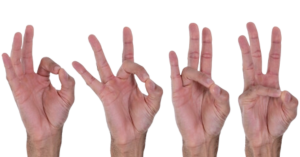
- Guide:
Touch your thumb to each fingertip in succession.
Increase speed gradually for better coordination.
- Importance:
Enhances thumb strength and flexibility, crucial for grasping objects.
E. Pinching Exercises

- Methods:
Pinch a small object between your thumb and forefinger.
Hold for a few seconds, then release.
- Benefits:
Essential for improving finger strength and coordination.
Resistance Exercises for Advanced Strengthening
As your hand grows stronger, you may introduce resistance exercises to further enhance strength.
A. Using Elastic Bands
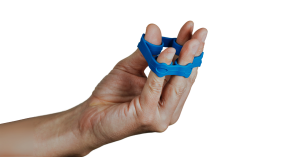
- How-to:
Loop an elastic band around your fingers and thumb.
Stretch the band by moving your fingers apart, and then bring them back together.
- Variations:
Try different thicknesses of bands for varied resistance levels.
B. Therapy Putty Exercises
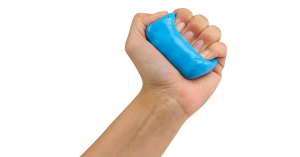
- Usage:
Knead the putty in various ways to work different muscles in your hands. - Benefits:
Offers varied resistance, effectively strengthening different areas of the hand.
Why Do We Need to Do Hand Strengthening Exercises?
Functional Importance
Hand strength is crucial for performing a wide range of activities. Whether it’s holding a cup of coffee, turning a doorknob, or tying shoelaces, a strong hand ensures that these tasks are performed with ease and efficiency.
Injury Prevention
Weak hands are more prone to injuries, such as sprains and strains. Strengthening exercises help build muscle and improve joint stability, reducing the risk of injuries.
Rehabilitation and Recovery
For those recovering from an injury or surgery, hand-strengthening exercises are essential components of rehabilitation programs. They help restore functionality and speed up the recovery process.
Consistency and Progression
A. Importance of Regular Practice
Explanation:
Consistent practice is key to gradual improvement in hand strength. Without regular effort, the muscles will not develop as effectively.
Benefits:
Consistency in practice leads to more effective and lasting results, building a foundation for sustained hand strength.
B. Tracking Progress
Methods:
Keep a journal to note down exercises, durations, and any noticeable improvements.
Use progress-tracking apps to log your daily activities and monitor changes.
Benefits:
Helps measure improvement and stay motivated. Seeing consistent progress can boost morale and commitment to the regimen.
C. Gradual Increase in Intensity
How-to:
Gradually increase the resistance or duration of your exercises to continue challenging the hand muscles.
Safety:
Avoid sudden increases in intensity to prevent injuries. Gradual progression is safer and more effective for long-term improvement.
D. Setting Achievable Goals
Tips:
Set realistic, short-term, and long-term goals. Start with simple tasks and gradually move to more complex objectives.
Benefits:
Provides direction and motivation. Achieving smaller goals boosts confidence and keeps one motivated for larger goals.
When to Seek Professional Help
A. Identifying Severe Cases
While self-guided exercises can be beneficial in strengthening a weak hand, it’s crucial to recognize when professional help is needed. Certain signs indicate that the issue may be more severe and require medical attention:
- Persistent pain: If you experience ongoing pain that does not subside with rest or mild activity, this could be a sign of a more significant problem.
- Severe weakness: When the weakness in your hand is so pronounced that it affects your ability to hold objects or perform basic movements, it’s essential to seek professional advice.
- Inability to perform daily tasks: If the weakness in your hand prevents you from carrying out everyday activities such as writing, cooking, or dressing, it’s time to get evaluated by a healthcare professional.
B. Consulting Physical Therapists
At Life Physiotherapy Clinic, our physical therapists can assist with:
- Personalized exercise plans: Tailored to your specific needs for safe and effective recovery.
- Professional guidance: Ensuring you perform exercises correctly and progress appropriately.
- Personalized therapy plans: Including supportive exercises and practical strategies to boost hand strength and coordination.
Conclusion
Strengthening a weak hand requires a combination of targeted exercises, persistence, and sometimes professional intervention. Whether you are incorporating hand stretches, grip exercises, or using therapeutic tools, consistency is key to seeing improvement. However, it’s essential to recognize when to seek professional help. If you experience persistent pain, severe weakness, or difficulty performing everyday tasks, reaching out to experts like those at Life Physiotherapy Clinic can make a significant difference. Our skilled physical and occupational therapists are dedicated to providing personalized plans tailored to your needs, ensuring safe and effective recovery. Don’t let a weak hand hinder your daily life. Remember, the team at Life Physiotherapy Clinic is here to support you every step of the way.

